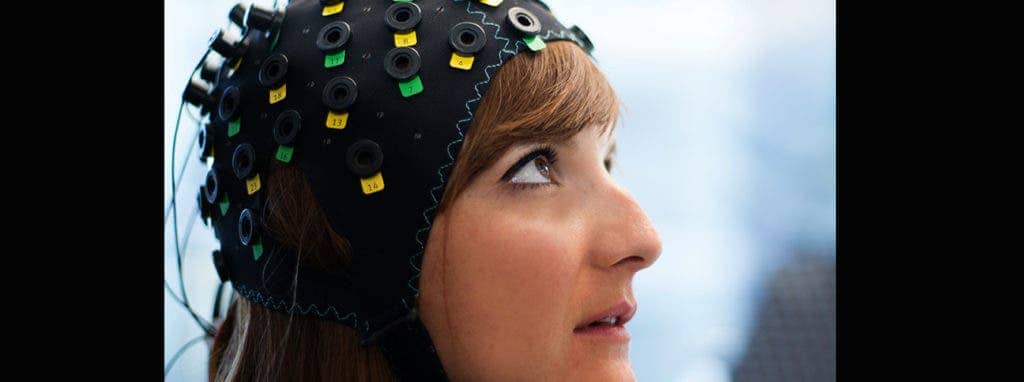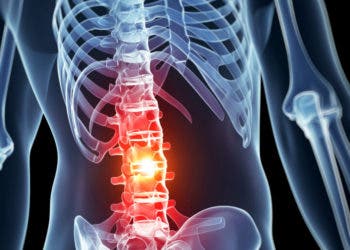
An innovative brain-reading device lets doctors communicate with ‘locked-in’ patients who are too disabled to communicate otherwise. The system developed by Swiss researchers at the Wyss Center uses infrared light to detect variations in blood flow circulating through the brain. Some of these patterns only occur when a patient would want to say “yes” or “no”.
A way out
Amyotrophic lateral sclerosis (ALS) is one of the most debilitating diseases out there. Patients afflicted with the neurodegenerative condition will gradually, but surely, lose bodily functions until they eventually become paralyzed. ALS’ perversion, however, lies in the fact that these patients are still aware. They can think as straight as any other person and have equally complex emotions.
Many ALS patients communicate with family members and doctors using their eye lids. When a question is posed, an ALS patient might blink his left eye for ‘yes’ or the right eye for ‘no’. Strikingly, Jean-Dominique Bauby – a French journalist who became locked-in after suffering a stroke – used a similar system to dictate his bestselling memoire. He would blink his left eye when presented with each letter of the alphabet to form words. You can imagine how painstaking and tiring this must have been.
Some ALS patients are completely locked-in, however, being unable to control even their eye lids. Then there are ALS patients who are in a vegetative state – these people are really inside a black box. For these patients, this is where this most recent innovation comes in.
Four patients (three women and one man), aged 24 to 76, who had been diagnosed with completely locked-in syndrome for more than a year were selected for the study. The patients lived at home with their families who fed them through tubes. Ventilation kept the patients alive as these were unable to breath on their own anymore.
For many months, researchers trained their system by asking the patients very simple and clear ‘yes’ or ‘no’ questions like “Your husband’s name is Joachim?” or ‘Is Berlin the capital of France?’ During all this time, the patients had to wear a cap fitted with electronics that shone infrared light through the scalp. This technique, called functional near-infrared spectroscopy (fNIRS), can spot variations in blood flow patterns around different regions of the brain. A computer then makes sense of all those patterns to come up with an answer.
“The striking results overturn my own theory that people with complete locked-in syndrome are not capable of communication. We found that all four people we tested were able to answer the personal questions we asked them, using their thoughts alone. If we can replicate this study in more patients I believe we could restore useful communication in completely locked-in states for people with motor neuron diseases,” said Professor Niels Birbaumer, a neuroscientist at the Wyss Center for Bio and Neuroengineering in Geneva, Switzerland.
After the computer algorithm could score at least 70% accuracy for each patients’ questions, the researchers moved on to more complicated, personal questions. And this is where things were extremely surprising.
Some of the questions the researchers asked the patients, family alongside, dealt with quality of life. You’d imagine being locked-in is a terrible life but all four patients said they were happy with their lives.
That’s not say that all locked-in patients feel the same. We can’t speak for anyone else actually given the small sample size but that doesn’t make the finding any less surprising. It could be that these paralyzed persons have come to terms with their condition and have embraced it. Being completely paralyzed might have also plunged the patients in a meditation-like deep state.
We can’t know for sure how happy other in-locked patients are before more tests are made.
“This is the first time we’ve been able to establish reliable communication with these patients and I think that is important for them and their families,” said Niels Birbaumer, a neuroscientist who led the research at the University of Tübingen, for The Guardian. “I can say that after 30 years of trying to achieve this, it was one of the most satisfying moments of my life when it worked.”
Next, the researchers plan on expanding their method, which they published in PLoS Biology, by enabling locked-in patients to communicate beyond ‘yes’ or ‘no’ questions. An fNIRS-based system that would work similarly to how Bauby managed to wrote his book seems like a good start.
“Restoring communication for completely locked-in people is a crucial first step in the challenge to regain movement. The Wyss Center plans to build on the results of this study to develop clinically useful technology that will be available to people with paralysis resulting from ALS, stroke or spinal cord injury. The technology used in the study also has broader applications that we believe could be further developed to treat and monitor people with a wide range of neuro-disorders.”






